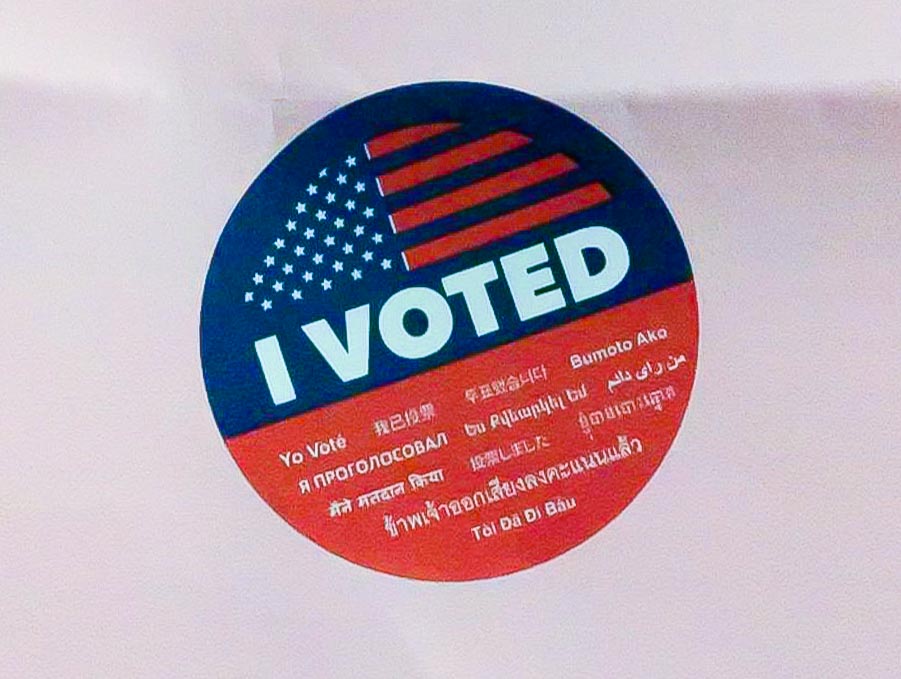Editorial: New York Democrats failed to protect voting rights
New York Republicans launched a well-funded campaign to defeat voting rights ballot initiatives. Democrats did not respond with the same effort or coordination. As a result, barriers to electoral participation, particularly for young people, will be upheld.
New York state Democrats failed to pass initiatives intended to expand voting rights. As a result, barriers to electoral participation will continue to be reinforced. (Photo by Katherine Chan)
November 15, 2021
New York Democrats failed to launch a coordinated campaign to protect voting rights through ballot Proposals 3 and 4 this November, leading to their rejection by voters. As New York Republicans poured $3 million and significant effort into anti-voting rights campaigns, Democrats did not mobilize a sufficient response. As a result, marginalized voters — the working class, youth, and Black and Latine New Yorkers — will continue to suffer disenfranchisement and experience barriers to electoral participation.
Proposal 3 would have removed state voting restrictions that require people to register at least 10 days in advance for elections, thereby enabling the passage of legislation allowing same-day registration. Proposal 4 would have authorized the state to pass legislation permitting any voter to request and vote with an absentee ballot. Both proposals were rejected by a majority of voters in the Nov. 2 election.
Same-day registration, or SDR, and expanding access to absentee ballots are proven to increase overall voter turnout. Black and Latine voters, who have historically been disenfranchised and continue to face barriers to electoral participation, benefit from SDR in particular. States that have implemented SDR have Black and Latine voter turnouts up to around 17% higher than states that have not. Same-day registration also increases turnout for young people, who experts say are disproportionately affected by traditional voter registration. Voter turnout for 18- to 24-year-olds in SDR states is on average 3.1-7.3% greater than non-SDR states.
Democrats, however, spent only $327,000 to support Proposals 3 and 4 — almost 10 times less than Republicans across the state spent on issue ads alone. The Republican campaign, “Just Say No,” aired across the state in addition to robust digital outreach efforts and media appearances. Even in a deep blue state like New York, Democrats failed to launch a coherent response to this campaign or even attempt to sell the ballot initiatives on their own terms.
Republicans strategically targeted upstate voters rather than voters in New York City, leading to greater margins of success. Democrats, on the other hand, did not even seriously attempt to raise support within the city, where their initiatives could have gained more traction. The ballot proposals ended up passing by smaller margins in the city than they were rejected by in other parts of New York.
The Republican campaign promoted their cause through unsubstantiated allegations of voter fraud and ballot harvesting. Countermessaging from New York Democrats and a systematized campaign to advertise the benefits of the ballot proposals could have bolstered opposition to the Republican campaign and encouraged voters to turn out in favor of voting rights. Instead, the New York State Democratic Party spent effectively no money on a campaign, with Chairman Jay Jacobs arguing that it was not the party’s responsibility to take initiative.
Several states have taken initiative to expand voting access through the implementation of same-day registration and absentee ballots. New York, despite its progressive reputation, failed to do the same. The Democrats’ disorganization and overall lack of effort in supporting ballot Proposals 3 and 4 mean that marginalized New Yorkers will continue to face barriers to voting.
Contact the Editorial Board at [email protected].
























































































































































